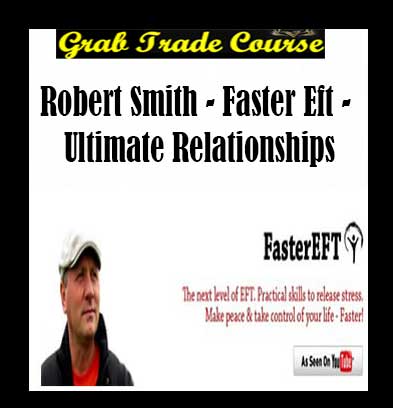James Krieger – Personal Trainer Collective – Coaching Clients with Obesity (Module 01 – 06)
Description
James Krieger – Personal Trainer Collective – Coaching Clients with Obesity (Module 01 – 06) download , James Krieger – Personal Trainer Collective – Coaching Clients with Obesity (Module 01 – 06) review , James Krieger – Personal Trainer Collective – Coaching Clients with Obesity (Module 01 – 06) free
James Krieger – Personal Trainer Collective – Coaching Clients with Obesity (Module 01 – 06)
Coaching Clients with Obesity is specifically designed to empower the personal trainer when dealing with the unique challenges of clients with obesity. Obesity is a global epidemic, and clients with obesity need special consideration from both a nutritional and exercise standpoint.
Course Syllabus
-
Module 1: Obesity – A Unique Challenge
-
Unit 1: What is Obesity
- Define obesity
- Understand the health implications of obesity
- Identify the countries with the highest and lowest obesity rates
- Understand the spread of obesity in the United States of America
-
Unit 2: The Primary Driver Behind Obesity
- Understand energy balance and how it impacts body weight
- Identify the components of energy balance that are driving obesity
- Understand how the environment can impact food intake
- Understand how palatability and energy density can impact food intake and food-seeking behaviours
- Understand optimal foraging theory and how it relates to overeating
- To identify how food technology has impacted the reinforcing characteristics of food
- Define “settling point” and understand how palatability and reward impact it
- Understand how food variety impacts calorie intake
-
Unit 3: Secondary Drivers of Obesity
- Identify secondary factors that are contributing to the obesity epidemic
- Understand how food form can impact appetite and satiety
- Understand the mechanisms via which sleep loss can contribute to obesity
- Understand how inactivity can impact food intake
-
-
Module 2: Nutrition Strategies for Weight Management
-
Unit 4: Energy Balance and Setting Calorie Targets
- Understand the adaptations that occur in the body during an energy deficit
- Identify the advantages and disadvantages of small and large energy deficits
- Be able to calculate calorie targets for weight loss
-
Unit 5: Setting up a Sustainable Nutrition Plan
- Identify the characteristics of a sustainable, reduced calorie diet
- Understand appropriate protein intakes for the obese client
- Define energy density and understand how to apply our knowledge of energy density to construct a high-satiety diet
- Understand the basic mechanisms behind the efficacy of popular diets
- Understand basic semi-quantitative and non-quantitative dieting strategies
- Understand the importance of dietary adherence
- Identify how to alter food environment to enhance adherence
-
-
Module 3: Exercise and the Obese Client
-
Unit 6: Components of Energy Expenditure
- Identify the components of energy expenditure
- Understand the relationship between metabolism and bodyweight change
-
Unit 7: Non-Exercise Activity Thermogenesis (NEAT)
- Define non-exercise activity thermogenesis (NEAT)
- Understand the magnitude of inter-individual variances in NEAT
- Understand what happens to NEAT with age, weight loss, exercise, and obesity
-
Unit 8: Impacts of Endurance Exercise and Interval Training on Energy Expenditure Fat Loss
- Understand how endurance exercise impacts energy expenditure during exercise and during recovery
- Understand how interval training impacts energy expenditure during exercise and during recovery
- Understand how interval training compares to endurance training for energy expenditure and fat loss
-
Unit 9: Impacts of Resistance Exercise on Energy Expenditure and Fat Loss
- Understand how resistance training impacts energy expenditure during exercise and during recovery
- Understand how volume and intensity can impact energy expenditure and fat loss
- Understand how resistance exercise compares to aerobic exercise regarding the effects on metabolism and 24-hour energy expenditure
-
Unit 10: Impacts of Exercise on Abdominal Fat & FFM Retention
- Understand how exercise intensity may impact abdominal fat
- Understand how exercise may impact fat-free mass retention during weight loss
- Identify the difference between fat-free mass and muscle
- Understand the interaction between resistance training and fat-free-mass retention
-
Unit 11: Impact of Exercise on Appetite
- Understand the different appetite responses to calorie restriction and exercise
- Identify how exercise may impact appetite
- Understand how exercise intensity may impact appetite
-
Unit 12: Impacts of Fasted vs Fed Exercise on Energy Expenditure and Fat Loss
- Identify the proposed mechanisms for fasted exercise improving fat loss
- Understand the research findings regarding fasted versus fed exercise
-
Unit 13: Exercise Training Modalities for Obese Clients
- Understand the unique challenges when programming exercise for an obese client
- Identify which modalities of aerobic training, interval training, and resistance training may be most appropriate for obese clients
- Apply programming principles to hypothetical examples of obese clients
-
Unit 14: Strategies for Increasing NEAT
- Identify strategies to help increase NEAT and how to incorporate them into a client’s lifestyle
- Understand how to use activity tracking devices to help increase a client’s NEAT
-
-
Module 4: Lifestyle Factors for Obesity
-
Unit 15: Sleep & Self Monitoring
- Understand strategies to enhance sleep quality and quantity
- Understand the relationship between self-monitoring and success
- Identify how self-monitoring tools can be used to enhance success rates
-
-
Module 5: The Bigger Picture – Adherence and Long-Term Success
-
Unit 16: Long-term Weight Maintenance
- Identify the reasons why long-term weight maintenance success rates are low
- Understand the characteristics of successful long-term weight maintainers
- Understand the importance of physical activity to long-term weight maintenance
-
Unit 17: Psychology of Obesity – Strategies for Adherence and Successful Weight Loss/Maintenance
- Identify the psychological consequences and comorbidities of obesity
- Understand strategies to set a client up for success
- Understand variables associated with successful adherence, weight loss, and weight maintenance
- Understand variables associated with lapses in adherence, and how to create strategies to limit lapses
- Understand how motivation, intention, and planning are related to behavior
- Understand the advantages of flexible versus rigid approaches
- Understand potential sources of tension during weight maintenance, and how to manage or resolve that tension
-
-
Module 6: Consultation and Practical Programming
-
Unit 18: Consulting with an Obese Client and Practical Application
- Identify the phases of consulting an obese client
- Identify the information you need to gather during each consultation phase
- Understand the basics of programming for an obese client
- Understand how to use this information to make adjustments based on progress
- Understand the special factors you need to consider when working with obese clients compared to the general population
-
Unit 19: Summary
Frequently Asked Questions:
- Innovative Business Model:
- Embrace the reality of a genuine business! Our approach involves forming a group buy, where we collectively share the costs among members. Using these funds, we purchase sought-after courses from sale pages and make them accessible to individuals facing financial constraints. Despite potential reservations from the authors, our customers appreciate the affordability and accessibility we provide.
- The Legal Landscape: Yes and No:
- The legality of our operations falls into a gray area. While we lack explicit approval from the course authors for resale, there’s a technicality at play. When procuring the course, the author didn’t specify any restrictions on resale. This legal nuance presents both an opportunity for us and a boon for those seeking budget-friendly access.
- Quality Assurance: Unveiling the Real Deal:
- Delving into the heart of the matter – quality. Acquiring the course directly from the sale page ensures that all documents and materials are identical to those obtained through conventional means. However, our differentiator lies in going beyond personal study; we take an extra step by reselling. It’s important to note that we are not the official course providers, meaning certain premium services aren’t included in our package:
- No coaching calls or scheduled sessions with the author.
- No access to the author’s private Facebook group or web portal.
- No entry to the author’s exclusive membership forum.
- No direct email support from the author or their team.
We operate independently, aiming to bridge the affordability gap without the additional services offered by official course channels. Your understanding of our unique approach is greatly appreciated.
- Delving into the heart of the matter – quality. Acquiring the course directly from the sale page ensures that all documents and materials are identical to those obtained through conventional means. However, our differentiator lies in going beyond personal study; we take an extra step by reselling. It’s important to note that we are not the official course providers, meaning certain premium services aren’t included in our package:
Refund is acceptable:
- Firstly, item is not as explained
- Secondly, Item do not work the way it should.
- Thirdly, and most importantly, support extension can not be used.
Thank you for choosing us! We’re so happy that you feel comfortable enough with us to forward your business here.
- Innovative Business Model:
-









Reviews
There are no reviews yet.